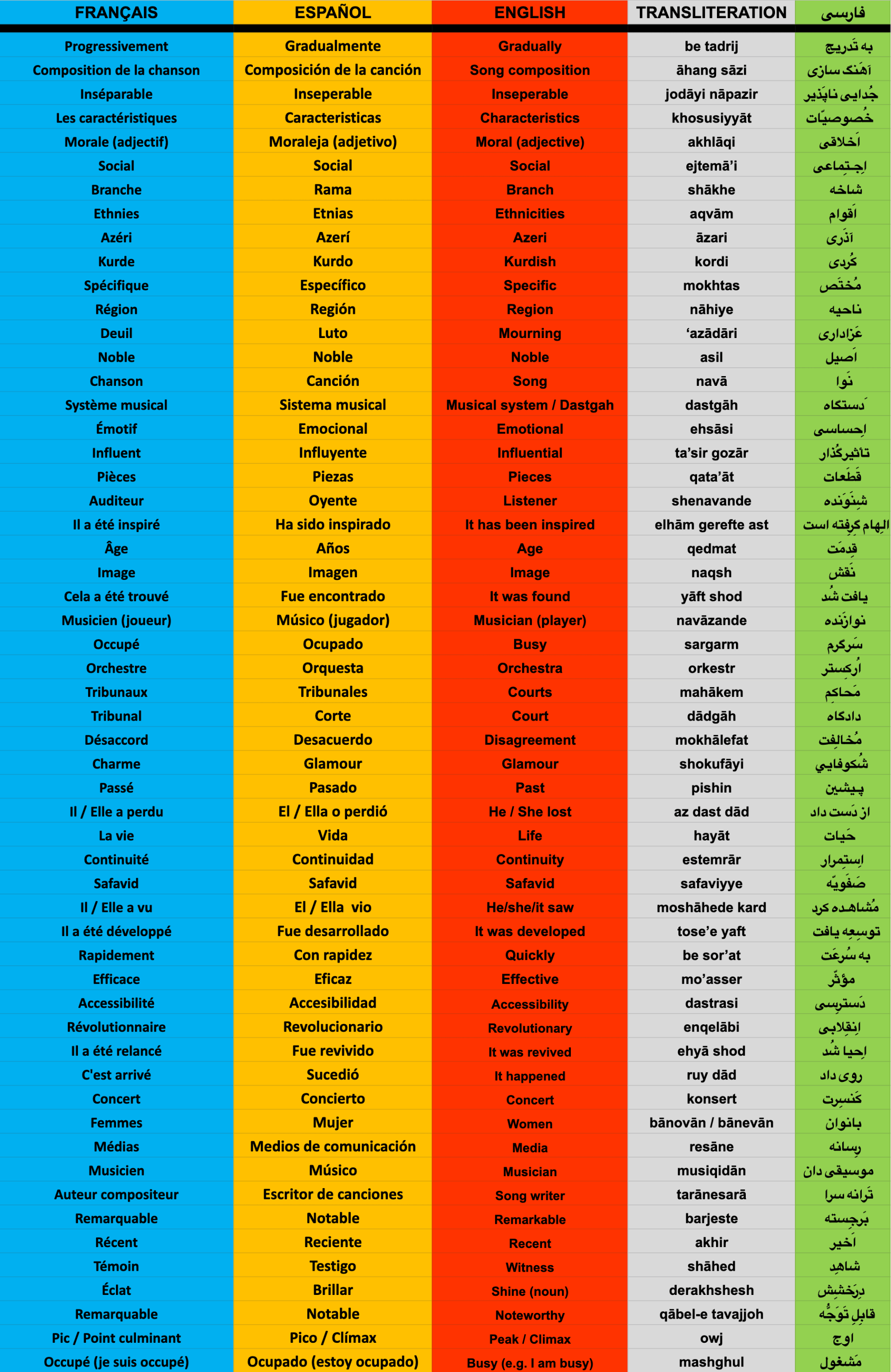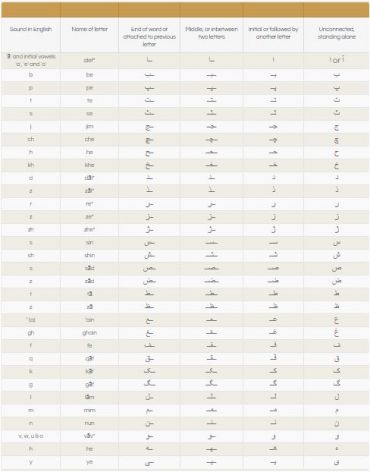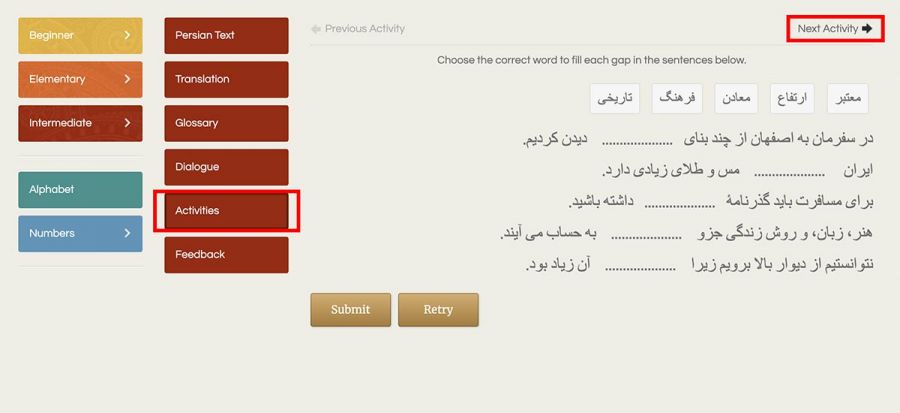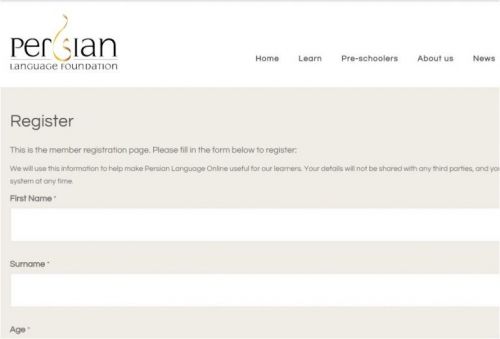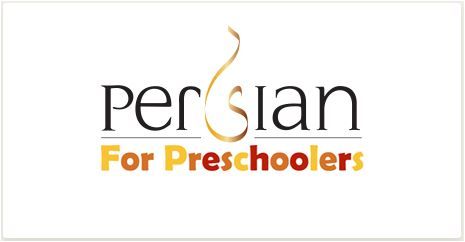
Project 6060 – Lesson 48
EN
FR
ES
FA
-
EN
Lesson 48
Iranian Music
***
Translation
Iranians have always been interested in music and music has been a part of their lives. Even though, in the past century, some of the music and song writing in Iran has been subject to the influence of Western music, traditional Iranian music has remained an inseparable part of the lives and culture of Iranian people. Iranian music demonstrates the moral characteristics, political, social, and cultural events of the Iranian nation.
Iranian music can be divided into different branches:
- Ethnic and regional Iranian music, like Kurdish and Azari music, which is specific to a certain ethnicity and region.
- Religious music, which has been used in religious ceremonies pre- and post-Islam, and which is nowadays mainly used for mourning.
- Traditional or original Iranian music, which includes tunes, songs and specific musical ‘dastgah’s, and is usually emotional and moving.
- Modern Iranian music, which includes pop, jazz, rock and rap music etc. and has mainly been inspired by western music.
Music in Iran stretches back thousands of years. A few years ago, a 3,400 year-old drawing was found in the city of Dezful in Iran, which showed a group of musicians busy playing instruments. The way that they were sitting and playing shows that these musicians were members of one of the world’s first orchestras. In the time of the Achaemenid Empire, music had an important role in the courts and religious ceremonies. The climax of music in Iran was in the time of the Sassanids, which they call the golden era of Iranian music.
Because of religious opposition, Iranian music in the post-Islam era did not have the glory of its previous era, although it did live on. This continuity can be observed in the construction of the Chehelsotun Palace and the music room of the Ali Qapu Palace in the Safavid period.
Since the early years of the twentieth century, original Iranian music has developed due the country’s social and political conditions and the push to celebrate national art. In the 1950s, a radio programme called ‘Golha’ was produced and took original Iranian music as a cultural heritage to every home that had access to a radio. This programme played a large part in the promotion of music amongst Iranians and continued until the final years of the 1970s.
In the 1950s, pop and jazz music also developed in Iran and was quickly noticed in other Persian speaking countries.
In the 1970s, the electric guitar entered pop music, but this period was very brief and short-lived because after the Islamic Revolution in Iran, music was banned. Many pop and jazz singers went from Iran to other countries and continued their musical careers there and only a small number of them stayed in Iran, where they either didn’t work for a while, or they produced the music of the revolution. Of course, pop music in Iran was revived about ten years later. The same thing that happened to pop music also occurred for Iranian rock music, which began in the 1960s.
Even nowadays, classical and modern music is paid attention to in Iran and lots of concerts are held in various cities in Iran. Although these days the voices of female singers are not broadcast in the Iranian media and musical instruments are not shown, nonetheless, modern Iran, as ever, has brilliant female and male musicians, singers and composers, and in recent years we have witnessed the stardom of Iranian artists and musicians inside and outside Iran.
-
FR
Leçon 48
Musique Iranienne
***
Traduction
Coming soon
-
ES
Lección 48
Música Iraní
***
Traducción
Coming soon
-
FA
درس چهل و هشتم
موسیقی ایرانی
***
متن فارسی
ایرانیان از گذشته به موسیقی علاقه داشته اند و موسیقی بخشی از زندگی آنها بوده است. اگرچه در یک قرن گذشته، به تدریج بخشی از موسیقی و آهنگ سازی در ایران تحت تأثیر موسیقی غربی قرار گرفته، امّا موسیقی سنّتی ایران همچنان بخشی جدایی ناپذیر از زندگی و فرهنگ مردم ایران مانده است. موسیقی ایرانی خصوصيّات اخلاقي، وقايع سياسی، اجـتماعـي و فرهنگی ملّت ایران را نشان می دهد.
موسيقي ایرانی را می توان به شاخه های مختلفی تقسیم کرد:
– موسیقی اقوام و محلّی ایران مانند موسیقی کردی و آذری که مختصّ قوم و ناحیۀ خاصّی است.
– موسیقی مذهبی که چه قبل و چه بعد از اسلام در مراسم مذهبی به کار می رفت و امروزه بیشتر در عزاداری ها استفاده می شود.
– موسیقی سنّتی یا اصیل ایران که شامل نواهـا، آوازها و دستگاه های موسیقایی مخصوص و بسیار احساسی و تأثیرگذار است.
– موسیقی مدرن ایرانی که شامل موسیقی پاپ، جاز، راک، رپ و غیره است و بیشتر از موسیقی غربی الهام گرفته است.
قدمت موسیقی در ایران به هزاران سال پیش می رسد. چندین سال پیش نقشی ۳۴۰۰ ساله در شهر دزفول در ایران یافت شد که گروهی نوازنده را نشان می دهد که به نواختن ساز سرگرم هستند. نحوۀ نشستن و نواختن آنها نشان می دهد که این نوازندگان اعضای یکی از اوّلین ارکسترهای جهان هستند. در دوران امپراتوری هخامنشی، موسیقی نقش مهمّی در محاکم دادگاهی و مراسم مذهبی داشته است. نقطۀ اوج موسیقی ایران در زمان ساسانیان بود که به آن دورۀ طلایی موسیقی ایران می گویند.
در دوران پس از اسلام موسيقی به دليل مخالفت های دینی، شکوفايی دوران پـيشين خود را نداشت، ولی به حيات خود ادامه داد. اين استمرار را می توان در زمان صفویّه در بنای کاخ چهـلستون و اتاق موسيقی کاخ عالی قاپو مشاهـده کرد.
موسیقی اصیل ایرانی از سال های نخست قرن بیستم به خاطر شرایط اجتماعی و سیاسی کشور و تلاش برای بزرگداشت هنر ملّی رو به گسترش گذاشت. در دهۀ ۱۹۵۰ یک برنامۀ رادیویی به نام “گل ها” تولید شد و موسیقی اصیل را به عنوان میراث فرهنگی به تمام خانه هایی برد که به رادیو دسترسی داشتند. این برنامه نقش زیادی در گسترش موسیقی بین ایرانیان داشت و تا سال های پایانی دهۀ ۱۹۷۰ ادامه داشت.
موسیقی پاپ و جاز نیز در دهۀ ۱۹۵۰ در ایران توسعه یافت و به سرعت در کشورهای فارسی زبان دیگر مورد توجّه قرار گرفت.
در دهۀ ۱۹۷۰ گیتار برقی وارد موسیقی پاپ شد، امّا این دوره بسیار کوتاه بود و عمر زیادی نداشت زیرا بعد از انقلاب اسلامی در ایران موسیقی ممنوع شد. بسیاری از خوانندگان پاپ و جاز از ایران به کشورهای دیگر رفتند و کار موسیقی خود را در آنجا ادامه دادند و تنها عدّۀ کمی از آنها در ایران ماندند که یا تا مدّتی کار نکردند و یا موسیقی انقلابی تولید کردند. البته حدود ده سال بعد موسیقی پاپ در ایران احیا شد. برای موسیقی راک ایرانی نیز که در دهۀ ۱۹۶۰ آغاز شد همان اتّفاقی افتاد که در مورد موسیقی پاپ روی داد.
امروزه هم به موسیقی کلاسیک و هم به موسیقی مدرن در ایران توجّه می شود و کنسرتهاى بسیاری در شهرهای مختلف ایران برگزار می شود. اگرچه در رسانه های ایران امروزه صدای بانوان خواننده پخش نمی شود و سازهای موسیقی نشان داده نمی شود، امّا ایران امروز هم همچون همیشه، زنان و مردان موسیقی دان، خواننده، نوازنده، ترانه سرا و آهنگ ساز برجسته دارد و در سالهاى اخير شاهد درخشش هنر موسيقىدانان ايرانى در داخل و خارج از ایران بوده ایم.
DIALOGUE
DIALOGUE
DIÁLOGO
مُکالِمه
-
EN
Translation of Dialogue
Maryam: Is Iran’s regional music modern?
Bahman: Some of it’s modern and some of it’s traditional.
Maryam: How did Iran’s music change after the revolution?
Bahman: First music was banned. Then a few revolutionary songs were sung.
Maryam: After the start of the war with Iraq there were a few songs made about war, is that right?
Bahman: Yeah, Then gradually other types of music were released.
Maryam: Do they broadcast music on radio and television now?
Bahman: Yeah, But normally they don’t show instruments. -
FR
Traduction de Dialogue
Coming soon
-
ES
Traducción de Diálogo
Coming soon
-
FA
متن فارسی مُکالمه
مریم: موسیقی محلّی ایران مدرنه؟
بهمن: بخشی از اون مدرنه و بخشی از اون سنّتیه.
مریم: بعد از انقلاب، موسیقی ایران چه تغییری کرد؟
بهمن: اوّل موسیقی ممنوع شد. بعد یه سری آهنگای انقلابی خونده شد.
مریم: بعد از شروع جنگ با عراق یه سری آهنگ در مورد جنگ درست شد، درسته؟
بهمن: آره، بعد به تدریج دوباره موسیقی های دیگه آزاد شد.
مریم: الان تو رادیو تلویزیون موسیقی پخش می کنن؟
بهمن: آره، امّا معمولاً سازا رُ نشون نمی دن.
